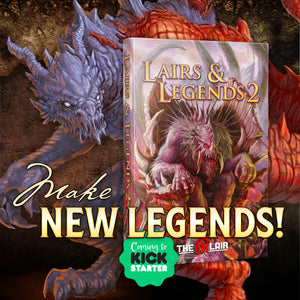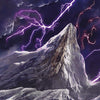10 Dungeon Map Design Tips Every DM Should Know

By Luke Hart
Today, we’re tackling something every DM wrestles with at some point: how to design a dungeon map. You know, the thing we draw on grid paper or build in a VTT to represent the location where an adventure unfolds. Creating a great dungeon map isn’t just about drawing a few boxes and connecting them with hallways. It’s an art form, one that can turn a simple crawl into an unforgettable experience.
The good news? It’s not rocket science. You just need a little structure, some creativity, and the right design mindset. So, let’s dig into ten guidelines for designing dungeon maps that your players will love exploring.
By the way, are you a NEW GAME MASTER feeling a bit overwhelmed by everything involved with running a role-playing game? If so, the Secret Art of Game Mastery can help. Get over 100 years of GM experience distilled into practical, easy-to-read advice.
Watch or listen to this article by clicking the video below.
1. Multiple Entrances
A dungeon should never have just one way in.
At minimum, include an obvious entrance and a hidden or alternative one. This simple choice gives players agency right from the start — and makes them feel clever for finding options the “average” adventurer might miss.
In my Against the Fire Giants remake, I gave players two ways into the fortress:
- The front gate, heavily guarded by fire giants and their minions.
- A volcanic shaft leading down from the top of the mountain — still dangerous, but far less defended.
Each had trade-offs. The main gate was suicidal to attack head-on but cleared out key enemies early. The volcano route let them slip in unnoticed but left those same enemies alive, ready to cause trouble later.
Multiple entrances = meaningful player choice. That’s good adventure design.
2. Nonlinear Layouts and Loops
If your dungeon only moves in a straight line from room to room… it’s basically an amusement park ride.
Players lose the thrill of exploration when there’s only one “correct” way to go.
Nonlinear dungeons — ones with loops, branches, and alternate routes — let players make real decisions and discover the map naturally. A great example is Level 17 of Dungeon of the Mad Mage, which has tons of loops and cross-connections. Players can explore in different directions, get turned around, and feel like they’re delving into a living labyrinth.
Yes, this makes it harder for you, the DM. You can’t always predict their path, so you’ll need to prep more areas or learn to improvise confidently. But it’s absolutely worth it — players love the freedom and the sense of real discovery.
3. Add Elevation and Multiple Levels
Flat dungeons are fine. But flat and featureless dungeons? That’s a crime against creativity.
Use verticality to make your map interesting:
- Stairs leading to upper levels
- Ramps, ledges, or platforms for tactical play
- Pits, cliffs, and ravines to add danger
In Curse of Strahd, the Werewolf Den is a great example. It has ledges, narrow tunnels, and cave levels that rise and fall, creating dynamic exploration and combat opportunities.
Elevation gives players more choices: Do we take the stairs? Try to climb? Push the ogre into the ravine?
Multi-level dungeons — whether they’re underground catacombs or multi-floor fortresses — always feel more realistic and exciting.
4. Include Secret Areas
A dungeon without secrets feels lifeless. Hidden doors, tunnels, and concealed chambers are classic for a reason — they reward curiosity and exploration.
These don’t always need to be behind secret doors. In Dungeon of the Mad Mage, certain chambers hide underwater passages connecting otherwise separate areas. Subtle clues like a faint draft near a wall or the sound of running water can lead observant players to exciting discoveries.
When players find something the average adventurer would have missed, it makes them feel brilliant. And that’s gold at the table.
5. Variety Is Everything
Nothing kills excitement faster than sameness.
Your dungeon should feel varied in every way:
- Room Purpose: Not every chamber is a “monster room.” Include armories, kitchens, temples, laboratories, or flooded crypts. (The Dungeon Master’s Guide, p. 292, has a great random room purpose table if you need ideas.)
- Shapes: Mix circular rooms, twisting corridors, and natural caverns with carved halls. Not everything should be square.
- Features: Blend natural caves with worked stone, wide halls with narrow tunnels, dry zones with flooded ones.
If every corridor looks the same, players will lose their mental map and start zoning out. If every area feels distinct, they’ll stay engaged and curious about what’s next.
6. Create Tactical Combat Areas
D&D is, at its heart, a game of tactical combat; so your dungeon should support that.
Design rooms that make battles interesting:
- Narrow bridges over lava pits
- Balconies for spellcasters
- Archers firing from behind low walls
- Choke points the monsters use strategically
Good map design can make even a simple skirmish feel memorable. Imagine your players fighting on castle battlements during a lightning storm, or holding a crumbling staircase against a swarm of undead. Terrain tells a story, too.
7. Add Natural Features (When Appropriate)
Caves and ruins come alive when nature’s had its say. Rivers cutting through tunnels, underground waterfalls, magma channels, tree roots breaking through ceilings — all of these details make the space feel ancient and believable.
Natural elements also create great mechanical variety: slippery terrain, limited footing, flowing water, or hazards like toxic mushrooms or geysers of steam. Use them sparingly but thoughtfully to add texture to your design.
8. Don’t Forget the Doors
Yes, doors. They seem obvious, but you’d be surprised how many times DMs forget to include them (ask me about the “Arcane Eye” fiasco sometime).
Doors are crucial because they:
- Control line of sight
- Add tension before entering new rooms
- Create pacing by forcing the party to pause
- Enable traps and locks that challenge rogues and spellcasters
Think about how each door functions — is it barred, trapped, broken, reinforced, or magically sealed? Each one is a storytelling opportunity.
9. Get Your Scale Right
Your dungeon’s scale affects how it plays.
- 5-foot squares work best for Virtual TableTops (VTTs).
- 10-foot squares make hand-drawn maps faster and cleaner for in-person play.
For big dungeons or sprawling caverns, I often use 10-foot squares to keep things manageable. For small, detail-heavy areas, I stick with 5-foot squares. Choose what’s most convenient for your medium.
10. Look at Other Maps for Inspiration
Here’s the biggest pro tip I can give you: study other maps.
If you sit down to design a dungeon from scratch with no reference, your brain will freeze up faster than a gelatinous cube. Instead, look at other D&D maps online or in published adventures. Notice how they handle flow, elevation, and room types. Once those creative juices start flowing, it becomes much easier to sketch something original.
Every DM stands on the shoulders of mapmakers who came before them. Use that to your advantage.
Final Thoughts
A great dungeon map does more than provide a play space — it tells a story.
It should feel believable, offer meaningful choices, and create exciting tactical moments. Whether you’re mapping a dripping cave or a demon-infested fortress, following these ten principles will make your designs more engaging and fun for your players.
Start small, experiment, and don’t be afraid to steal ideas from great maps that came before yours.
Because at the end of the day, your goal isn’t to make a “perfect” map; it’s to make one that your players will remember.
100 Years of GM Experience at Your Fingertips!
Are you a NEW GAME MASTER feeling a bit overwhelmed by everything involved with running a role-playing game? Are you a VETERAN GAME MASTER looking for new tips and tricks to take your games to the next level? Look no further than the Secret Art of Game Mastery.
We at the DM Lair have distilled our CENTURY of accumulated GM experience into an easy-to-read guide of practical advice that you can immediately apply to your games! We've even included our own templates–the things that we use to prepare our ACTUAL games.
Get all three books to master your game:
- The Secret Art of Game Mastery. Contains over 100 years of GM advice distilled into an easy-to-read format. It introduces and explains the tools of the trade, scheduling, playstyle, post-game notes, getting player feedback, and more.
- The Secret Art of Preparation. Brings to your fingertips the actual templates and guides that the DM Lair team uses to prepare games, Lair Magazine, and more. Designed as a three-ring binder, it's intended for you to write directly into for your entire campaign!
- The Secret Art of Notetaking. Gives you the keys to tracking your campaign from session to session just like the DM Lair team. Designed as a three-ring binder, it's intended for you to write in and keep track of your whole campaign!
With so much knowledge and experience on its pages, The Secret Art of Game Mastery is guaranteed to become an indispensable tool for all game masters, new and veteran alike. And if that isn’t enough, the information applies to all game systems and all genres!
-
Posted in
Game Master How-To Articles








